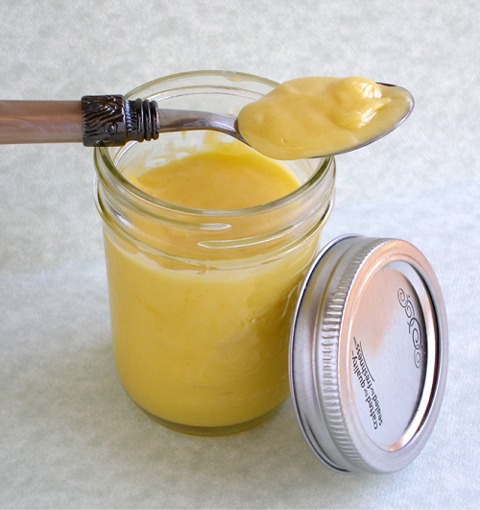
After my being asked from so many bakers why their Lemon Curd Recipe's fail and result in a funny aftertaste, I have discovered how to fix this problem, which is included with this recipe!
Lemon curd is a creamy mixture made from juice (usually lemon, lime or orange), sugar, butter and egg yolks. The ingredients are cooked together until the mixture becomes quite thick. When cool, the lemon (or lime or orange) curd becomes thick enough to spread and is used as a topping for breads and other recipes.
P.S. An aluminum pan should not be used to prepare lemon curd (or any acidic curd) because it will react with the egg yolks, turning them chartreuse.
FROSTING, ICING, ETC RECIPE HELP
luckyducky, Premium Member, Says: “I tried your lemon curd exactly and it was fabulous in taste and texture thanks to your excellent instructions.”
INGREDIENTS
4 large egg yolks (2 full fluid ounces = 2.5 ounces = 74 grams)
3/4 cup sugar (5.25 ounces = 150 grams)
3 fluid ounces (use a liquid measuring cup) lemon juice, freshly squeezed (about 2 1/2 large lemons) (3.25 ounces = 94 grams)
2 teaspoons lemon zest (finely grated) (4 grams)
Pinch of salt
4 tablespoons unsalted butter (softened) (2 ounces = 57 grams)
NOTES:
Always zest a lemon, or remove its peel before squeezing it for its juice!
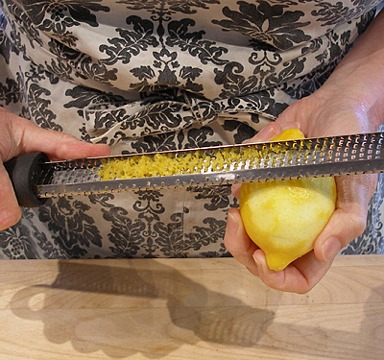
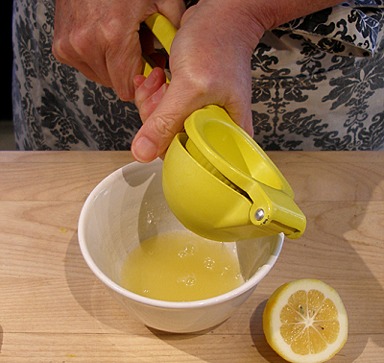
Always strain the juice to remove any seeds before using:
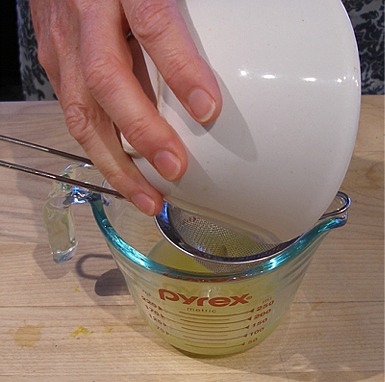
KELLY CA SAYS: I love to use the Meyer Lemons, freshly picked from my backyard tree, for this recipe. But, you can use regular lemons, instead!
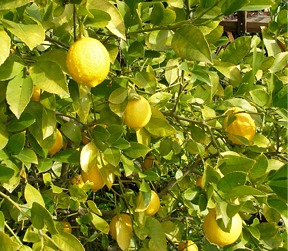
Kelly's Dwarf Meyer Lemon Tree is a mere 4 1/2 feet tall and it must have at least 100 beautiful lemons on it right now.
If you have never had Meyer Lemons, you are really missing out! They are sweeter than grocery store lemons and have a wonderful complex flavor.
INSTRUCTIONS
1. Have a strainer, suspended over a bowl, ready near the stove.
2. In a heavy noncorrodible saucepan, beat the egg yolks and sugar with a wooden spoon until well blended.
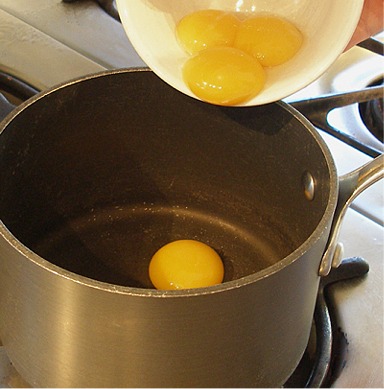
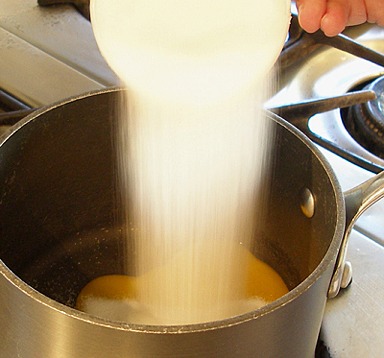
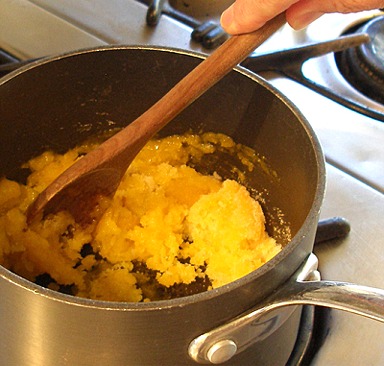
3. Stir in the lemon juice, lemon zest, and salt.
SARAH SAYS: I like cooking the zest in the curd for more flavor, and then, straining it from the curd at the end, for a smoother consistency.
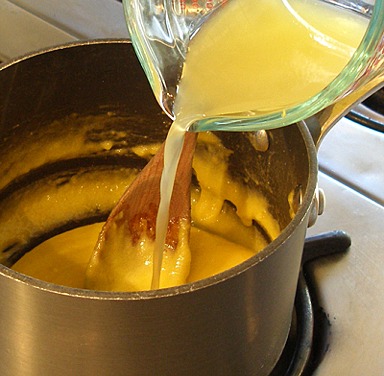
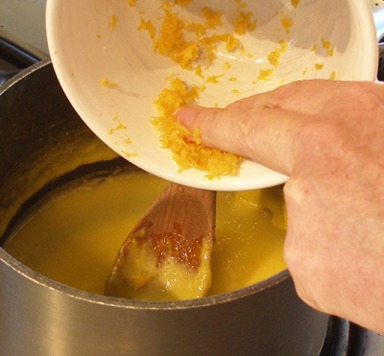
4. Cook over medium-low heat, stirring constantly, for about 6 minutes, until thickened and resembling hollandaise sauce, which thickly coats a wooden spoon but is still liquid enough to pour. (A candy thermometer will read 196 degrees F.) The mixture will steam.
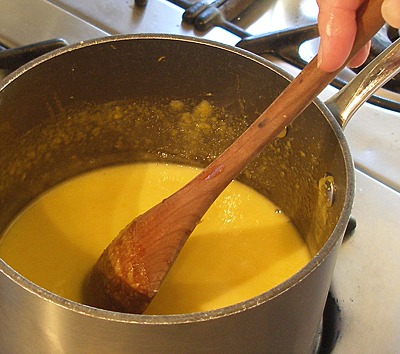
SARAH SAYS: The mixture will change from translucent to opaque and begin to take on a yellow color on the back of a wooden spoon.
The mixture will steam. It must not be allowed to boil or it will curdle. It will steam above 140 degrees F. Whenever steaming occurs, remove the pan briefly from the heat, stirring constantly to prevent boiling.)
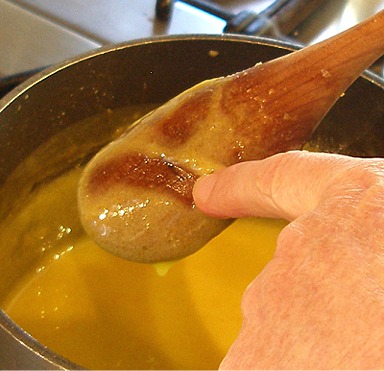
5. When the curd has thickened, pour it at once into the strainer set over a large bowl.
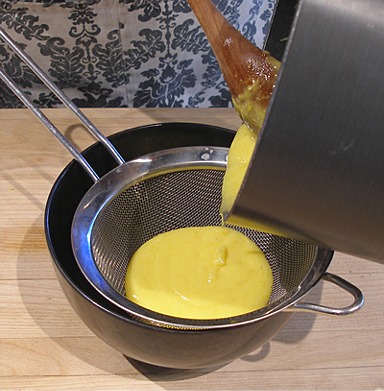
Press it with the back of a spoon until only the coarse residue remains and discard.
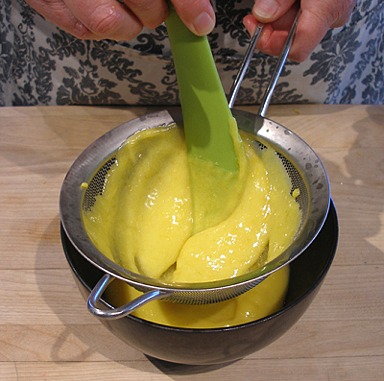
6. Let the mixture cool to body temperature – about 98 degrees F.
Whisk in the softened butter, one tablespoon at a time with an emersion blender or quickly, with a wire whisk until well blended.
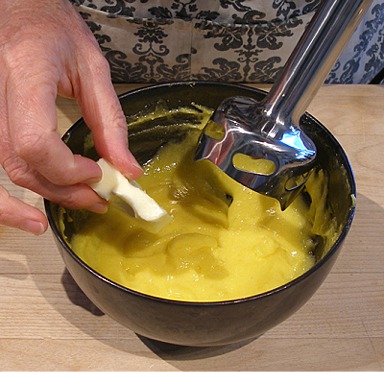
SARAH SAYS: 7-22-1010: Unlike Rose Levy Beranbaum, I like to add in the butter at the end of cooking; it helps prevent the curd from becoming grainy from overheating the lactose in the butter, and from creating off flavors.
Make sure you really whisk in the butter quickly, otherwise the curd will be greasy.
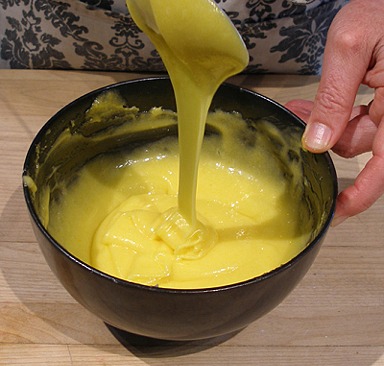
NOTE: Lemon curd thickens considerably upon cooling.
STORAGE
SARAH SAYS: Press a piece of plastic wrap on its surface and cut 6 small steam vents in the plastic to cool. Refrigerate the curd, preferably overnight, to thicken. Then, it can be frozen.
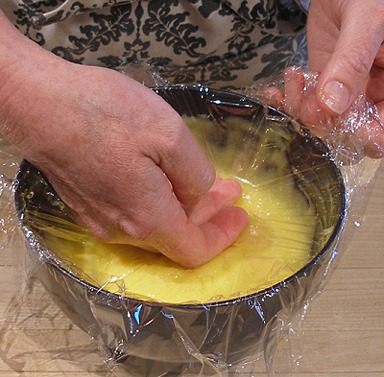
Store in the refrigerator in a covered container and consume within 1 week. The curd can be frozen for up to 1 month without quality changes when thawed.
To thaw, move the container from the freezer to a refrigerator for 12 – 24 hours before intended use.



